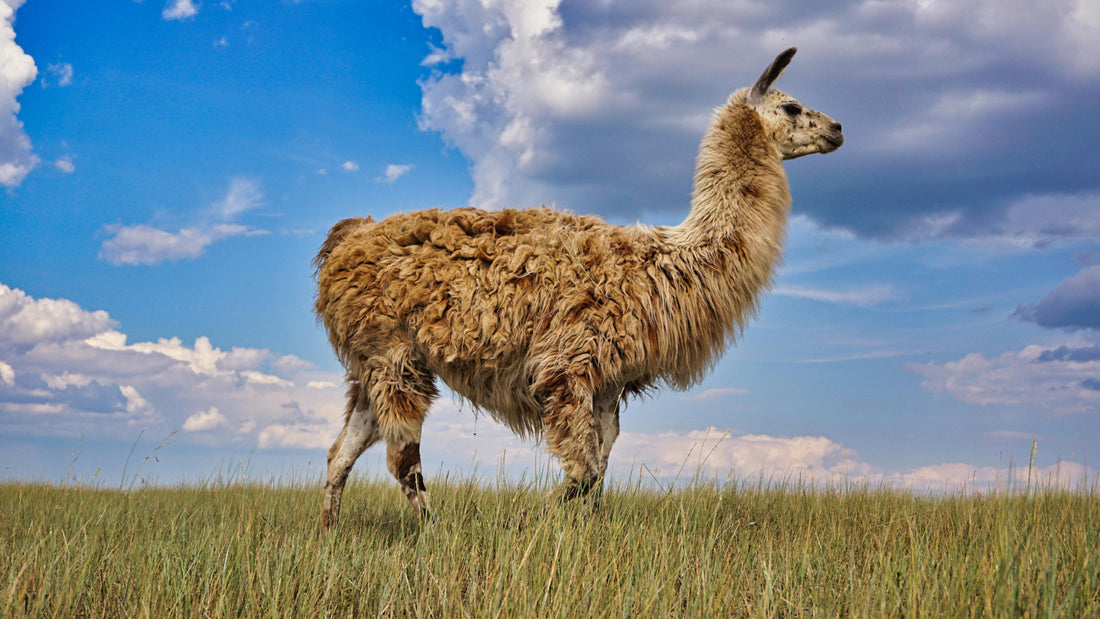There is so much to learn about the history, personality, behavior and appeal of alpacas for both farmers and people who love animals. They have lovable faces, a curious nature, and the fluffiest wool around to keep people warm during the cold winter months. Keep reading to learn more about the role these intriguing and quirky animals have played for ancient civilizations and still today in the modern world.

Fascinating Facts You Will Want to Know About Alpacas
Considered exotic livestock, they are starting to make more frequent appearances in a variety of interesting places, like college campuses, meditation retreats, and on the shelves of toy stores stocked with plush alpaca animals They are becoming a growing part of pop culture and are showing up increasingly in children's books about alpacas. Hailing from South America, most notably living in herds in Southern Peru, they have been imported to various regions around the world. Interest in the animals was primarily for their ridiculously soft wool, but they have since captured the hearts of people for their pleasant, albeit quirky, disposition. Here are some facts about alpacas that add to the intrigue of these lovable fur friends.

(1) Their wool is considered more luxurious than sheep wool for clothing.
Some liken the softness of alpaca wool to cashmere, unlike scratchy wool from sheep. Also it is hypoallergenic, making it a popular choice for people with sensitive skin. Sheep wool contains lanolin, a waxy substance that can be a bother for some, but alpaca wool is free from irritants. Furthermore, the wool from an alpaca is both warmer and lighter, trapping heat effectively through hollow hair fibers.
(2) There are two different types of alpacas- Suri and Huacaya.
Suri alpacas are the rarer of the two with fur that is highly sought after for high-end fashion clothing items. In fact, their luscious locks are so remarkable that ancient civilizations used them for currency. By nature, they are more reserved and aloof, a personality that seems to fit their appearance. Huacayas, on the other hand, are a much friendlier curious bunch. They are the more abundant type, and the only kind found in North America. The hair is more curly, almost crimped, giving them the appearance of a cuddly stuffed animal. They are starting to gain popularity as pets due to their endearing personality.
(3) Alpaca hair has been observed in 22 different natural shades.
However, the Alpaca Owners Association (AOA) recognizes just 16 official shades of fur. The colors on this spectrum are as follows: white, beige, light fawn, medium fawn, dark fawn, light brown, medium brown, dark brown, bay black, true black, light silver grey, medium silver grey, dark silver grey, light rose grey, medium rose grey, and dark rose grey.

(4) The lifespan is approximately 15 to 20 years.
When they live in captivity as pets, the life expectancy is slightly longer at 18 to 24 years. The oldest alpaca on record lived to be 26 years old. After 8 years, the quality their fiber decreases, so they become less valuable to farmers at that point. There are a number of medical and environmental issues that can curtail their lives. The most common medical issues include cardiovascular problems, digestive complications, and ingestion of toxins like poisonous plants or pesticides.
(5) They are environmentally friendly animals.
Considered the greenest animal on the planet, alpacas are beloved for their gentle carbon footprint. While other livestock, like cows, pigs, goats and sheep, consume large quantities of food and water, these animals require less resources to survive. They do far less harm to their grazing areas than other animals by not destroying the root systems, allowing plants and vegetation to regrow. The padded hooves of alpacas are also less damaging to the earth beneath them. Finally, their methane emission levels are much lower than other animals. Methane causes air pollution and attributes to global warming.
(6) Alpacas have communal dung piles.
The head of the herd leads the pack to the spot and they all poop together. This fascinating evolutionary practice significantly reduces the spread of disease and parasites. Also, for animals living in closer quarters, this habit allows them to keep their feeding and sleeping areas clean. Even more interesting, some have been successfully house-trained.
(7) Spitting is an important part of how alpacas communicate.
You'll often see alpacas spitting at each other as a way of figuring out who's in charge and settling arguments about things like food and their personal space. They can get pretty protective of their hay or pellets, and a quick spit is their way of saying "back off!" Female alpacas are also quick to spit at males who are bothering them, especially if they're pregnant or not interested in mating – this "spit-off" can even give breeders a clue that a female might be expecting. If an alpaca feels trapped, scared, or like you're too close, they might also spit as a way to defend themselves, and sudden noises or movements can set them off.
(8) Alpacas are generally very quiet in nature.
Known for their quiet and docile demeanor, alpacas generally produce minimal vocalizations. Their primary sound is a gentle hum, used for communication and to express concern or stress. However, the majority of their interactions are nonverbal. On occasion, a sharp "alarm call" pierces the quiet, typically signaling the presence of a perceived threat or unfamiliar object, such as a predator or livestock in a nearby field. Male alpacas also vocalize during breeding, emitting a distinctive guttural sound called "orgling" to "serenade" females.

(9) Alpacas are native to the Andes Mountains in South America.
Primarily sticking to marshy areas at high altitudes, alpacas originate from Peru, Bolivia, Argentina, Ecuador, and Chile. Approximately 3.7 million live in herds across the mountain ranges accounting for 80% of the world population. They have been imported to countries like the United States, Australia, and the United Kingdom where alpaca farms are most prolific.
(10) Alpacas do not have top front teeth.
Molars are on the top and bottom toward the back of the mouth to chew cud, which is food regurgitated from the stomach. However, in the front of the mouth, alpacas only have teeth on the bottom. A hard gum, called a dental pad, is on the top of the mouth for crushing hay, grass, and grain before swallowing. Males have an extra set of extra sharp weapons called fighting teeth, often used to attack the scrotums of other males in a show of dominance. For this reason, farmers typically cut the fighting teeth off all the way at the gum line.
(11) Alpacas do not behave in a violent or aggressive manner.
Renowned for their gentle, social, and placid nature, alpacas are generally safe and pleasant animals. Unlike some livestock, they do not head-butt, have horns, or possess hooves, and their graceful movement makes accidental collisions unlikely. While capable of defensive behaviors, they are not inherently violent. Owners should be aware that alpacas may reflexively kick a hind leg if startled from behind, which can cause bruising.
(12) Alpacas cannot thrive in solitude.
They really need to be with other alpacas – at least three is best – because they have strong herd instincts and just don't do well on their own. Being in a group makes them feel safe and happy. If they're alone, they can get really stressed, lonely, and even depressed. In a herd, they look out for each other and warn about danger, so a single alpaca is much easier for predators to target. Plus, baby alpacas learn how to act and get along by being around older alpacas, so raising a single baby without other camelids can cause problems with how they behave later on.
(13) Alpacas are highly intelligent and easily trained.
Alpacas are quick learners, readily adapting to halter and lead training, especially when started young. This early training facilitates their acceptance and willingness to follow. Beyond basic leading, many owners successfully train them to navigate obstacle courses, with some even showcasing their alpacas' skills in competitive events involving various maneuvers and small jumps. Their good memories contribute significantly to their trainability, and they respond well to positive reinforcement, especially food.
(14) Alpaca meat is edible but not widely consumed.
South Americans eat more alpaca meat than in other places around the world. While the meat is safe to eat when animals are managed according to medication withdrawal guidelines and veterinary advice, it is not currently a primary product in most markets due to economic considerations. Additionally, the USDA has not yet established specific processing guidelines for alpaca. Its flavor is often characterized as a mild red meat, akin to beef but slightly sweeter and without a fatty aftertaste, with some comparisons to mild lamb or non-gamey venison.

More Amazing Animal Facts for Kids
Spark a child's curiosity in learning more about the animal kingdom by sharing facts about a variety of creatures. Here are some additional lists to explore that reveal information you never knew about a few fascinating creatures.






